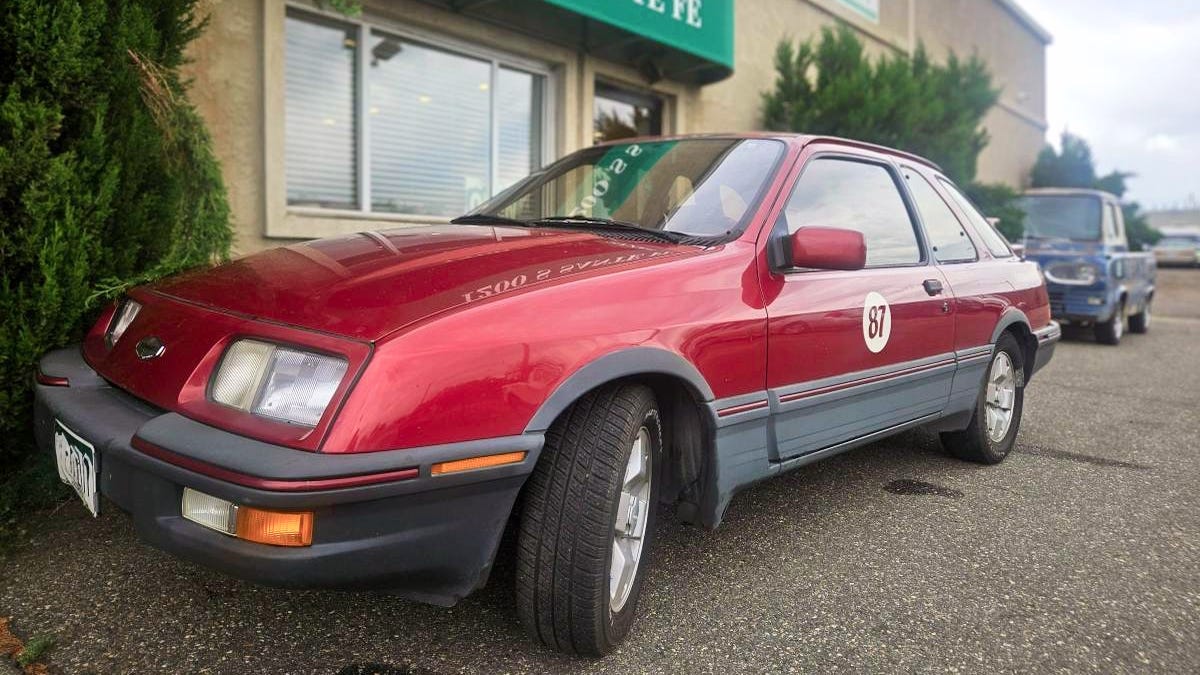When it was introduced, today’s Nice Price or No Dice Merkur was the wrong car at the wrong time. Now, it’s a rare and funky piece of automotive history. Let’s see if that and its price tag make it all right.
The practice of one automotive manufacturer taking a product from another and simply slapping a logo on it to sell it as its own is called “badge engineering.” One of the first and most obvious examples of this was the 1957-58 “Packardbakers,” which were redesigned Studebaker Presidents passed off as Packards. A more recent example is the 1991 Dodge Stealth R/T we began the week with yesterday. The primary engineering for that big coupe had been undertaken by Mitsubishi and the car was a Dodge only by way of its badging and some styling cues. That wonder-twinning didn’t seem to impress enough of you to consider our Stealth’s $23,500 asking price, which doomed the otherwise attractive car to a 68 percent No Dice loss.
I’m not quite sure we can call today’s 1987 Merkur XR4Ti a similar example of badge engineering, as the car from which it was derived was a full-blooded Ford, the European Sierra. FoMoCo’s big wheels and bean counters brought the car to the U.S., rebadged it as a Merkur (German for Mercury), and dropped it on Mercury dealers that were ill-equipped to sell the import next to competing products like the Capri and Cougar. Heck, one of the biggest hurdles the nascent brand faced was that Mercury salespeople didn’t even know the correct pronunciation of the new marque’s name.

An increasingly unfriendly exchange rate between the U.S. Dollar and the German Deutschmark further doomed Merkur’s chances at success, and the whole brand closed its doors at the end of 1989.
That’s too bad because, as this XR4Ti proves, these were extremely fun and funky cars. The companion Scorpio saloon wasn’t quite as funky, but it did also bravely boast a hatchback body in a market that shunned such styles and V6 power.
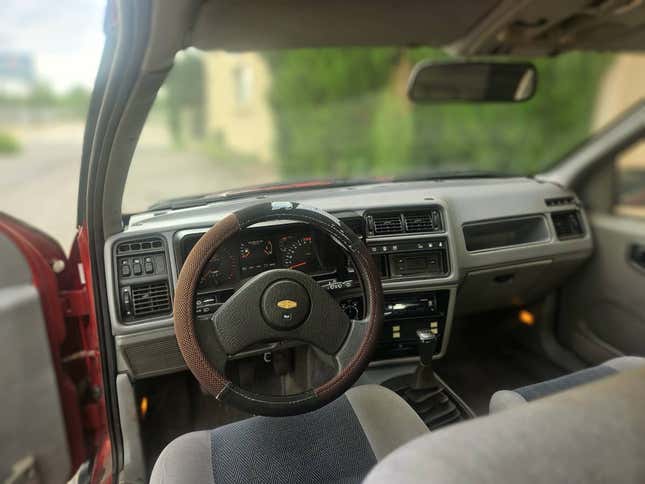
For the XR4Ti, Ford went back to the well from which sprung the turbocharged 2.3-liter “Pinto” four. During the 1980s, Ford followed two tracks for its American performance engines. The more traditional was the 5.0 V8, which was employed to great success in the Mustang and others. The other was the Brazilian-built turbocharged SOHC 2.3 four-cylinder, which also found a home in the Mustang, with the SVO being its ultimate form. The engine also gave rise to the Thunderbird Turbo Coupe and the XR4Ti. Ford’s small entry, the Escort, also got a turbo four in its GT model, but that didn’t earn the ardor that the larger Pinto mill enjoyed.
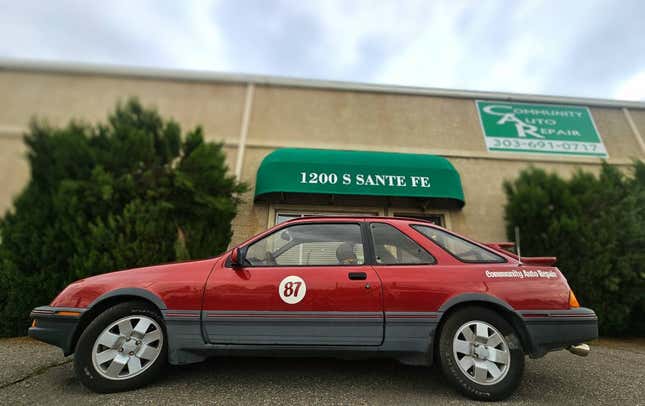
In the Merkur, the amount of power the 2.3 turbo four offers is transmission-dependent. If optioned with the automatic, power was limited to 145 horses. Go for the manual, however, and you got higher boost, engendering 30 more ponies.
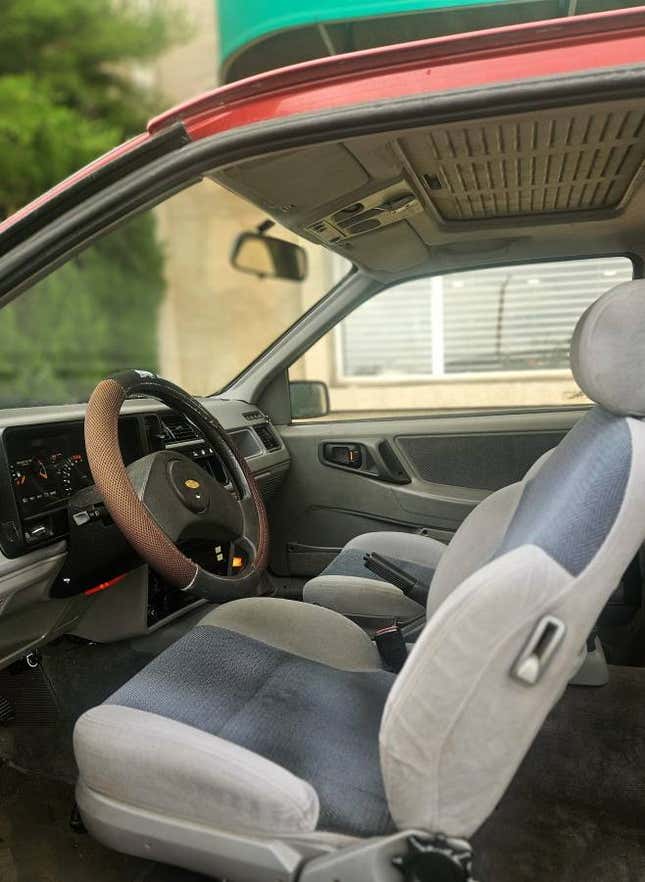
This XR4Ti has the stick and, hence, the full 175 horses. Also, being an ’87 rather than a later model, it still has the uber-cool bi-plane spoiler on the rear hatch. All models came with the oddly endearing three-window greenhouse and catfish nose.
This one is painted in merlot red metallic over gray plastic on the bumpers and lower trim. It remains an iconic and well-balanced style to this very day. Our car also has factory alloys and some advertising on the side that any new owner will put the removal of on the top of their to-do list.
The cabin is upholstered in cloth rather than the seemingly more common and far less durable leather. It all looks to be in pretty nice shape, only suffering from a crappy steering wheel cover and some Velcro pads on the dash, no doubt to secure a carpet cap. One bit of ’80s gee-wizardry is the quartet of cassette tape trays holding court in the center stack above the shifter.
According to the seller, the car has a clean title and 100,300 miles on the odometer. It has more than that in total, but that was the mileage when the barrels stopped turning. Apparently, some of the other gauges aren’t reading reliably, either. On the plus side, it has a modern stereo and speakers, so at least that’s working.
Other advantages of this car include a rust- and damage-free body, a clean title, and the ad’s claim that it “Runs and drives very well and fun to drive.” The price tag is $6,450.
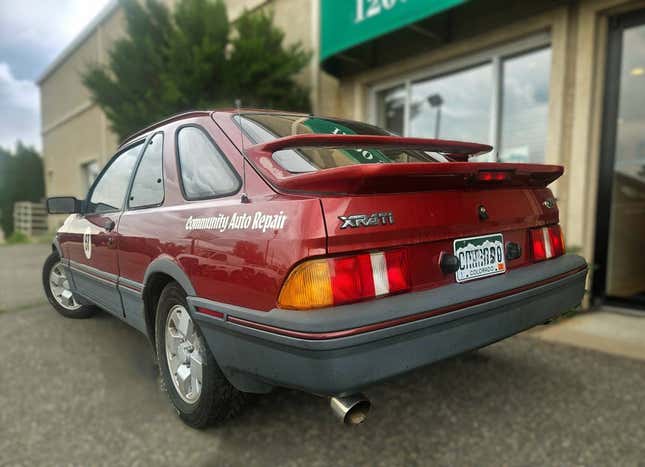
When it was first introduced, Ford imagined the XR4Ti would steal sales from BMW’s 3 Series. That didn’t turn out to be the case, and today, the cars don’t have the rabid following that BMW’s iconic E30 enjoys. Still, for a Ford fan, this could be an excellent addition to a collection or just an interesting collectible in its own right.
What’s your take on that idea and the $6,450 cost of fulfilling it? Does that seem fair, considering the car’s condition and history? Or is that too much to be remained every day of one of Ford’s failures?
You decide!
Denver, Colorado, Craigslist, or go here if the ad disappears.
Help me out with NPOND. Hit me up at [email protected] and send me a fixed-price tip. Remember to include your Kinja handle.

